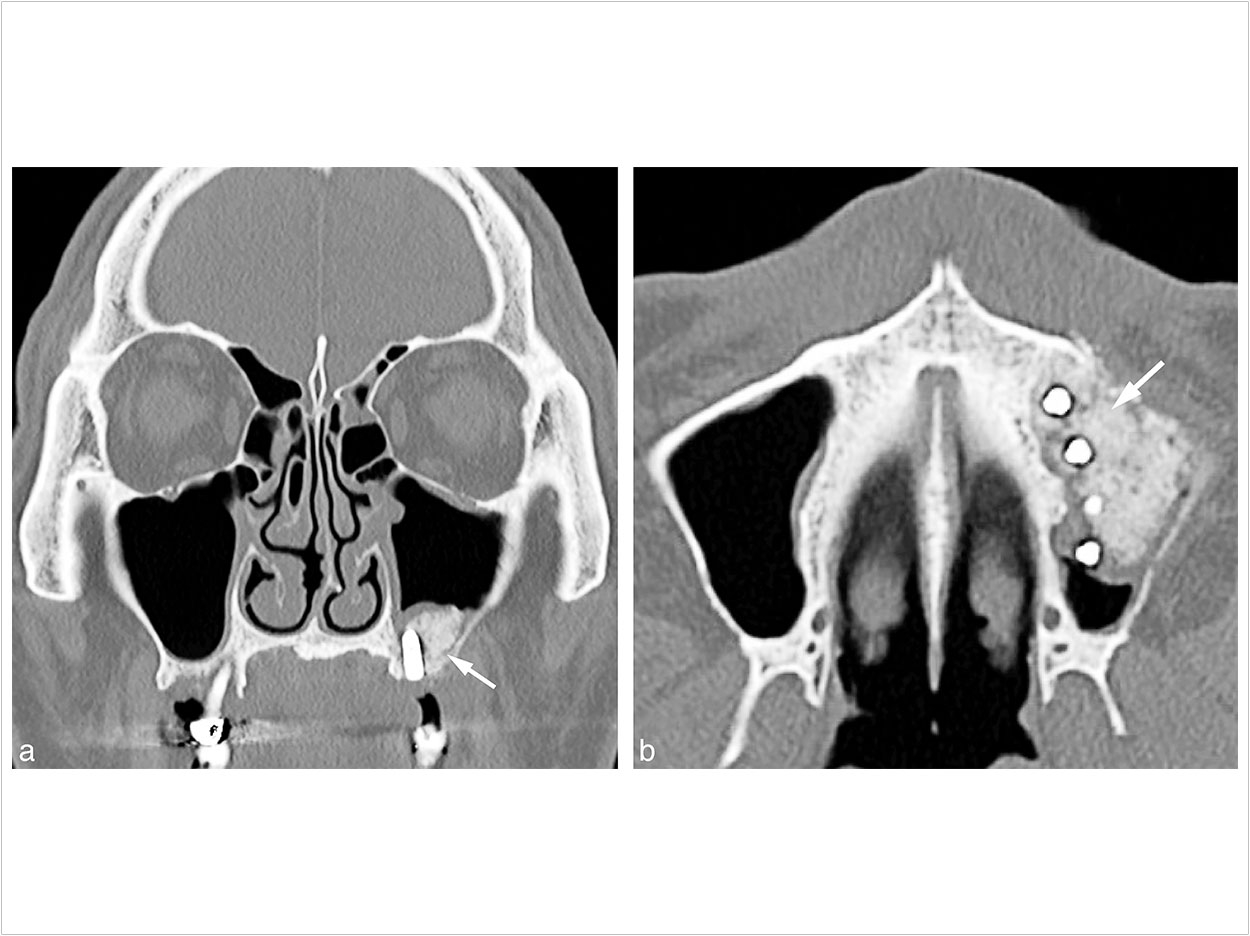
Clinicians often use maxillary sinus augmentation, which grafts bone into the upper jaw, to create new scaffolding to support dental implants. However, sinusitis, which is an infection of the sinus, can occur after this surgery and cause implant failure.
Current treatment focuses on endoscopic sinus surgery, which removes infected sinus tissues and the implant. Now, clinicians at Kyung Hee University, Hangyang University, and a private practice in Seoul, Korea, have detailed and evaluated a new intraoral treatment for sinusitis after maxillary sinus augmentation for ensuring long-term implant use.
The researchers performed maxillary sinus augmentation followed by dental implant installation on 307 patients from 2003 to 2017. Based on clinical symptoms such as pus, severe swelling, and nasal obstruction, seven of these patients (18 implants total) were diagnosed with sinusitis caused by sinus graft infection.
The patients received a one-week course of antibiotics and were split into three groups for intraoral treatments involving different timings for an incision and drainage (I&D) step that removed the infected particles and allowed natural drainage.
Immediately after manifestation of clinical symptoms, I&D was performed on group I. Groups II and III received antibiotic treatment one week and two weeks before I&D, respectively. Afterward, all patients received antibiotics for two weeks. After two months, further follow-up exams and surgeries were conducted as needed.
All seven patients greatly improved after intraoral treatment and the infection was resolved, with some differences between groups in clinical outcomes. Although not significant, patients in group I healed quickest, followed by groups II and III.
In group I, all sinus grafts were maintained and all implants (nine of nine) survived. In group II, two of four implants needed to be replaced after intraoral treatment, after which all implants performed well. In group III, additional bone grafting was needed in one patient and all four implants needed replacing but were well maintained afterward.
Overall, intraoral treatment conducted expediently resolved sinusitis and allowed patients to retain implants for the long term.
Because of the positive outcomes, the researchers said that sinusitis after sinus augmentation surgery in these cases resulted from an infection caused by the sinus graft itself and not a problem of the sinus membrane.
Thus, the researchers said, treating sinus graft infection with endoscopic sinus surgery will not resolve the infection and that it should be considered only when the infection has progressed to secondary locations.
The article, “Intra-Oral Approach for Sinus Graft Infection Following Lateral Sinus Floor Augmentation with Simultaneous Implant Placement: A Clinical Case Series,” was published by the Journal of Oral Implantology.
Related Articles
Implant Coating May Suppress Inflammatory Responses
Graphene Oxide May Improve Scaffold Performance in Implant Treatment
AO Issues Call for Abstracts for 2021 Meeting


